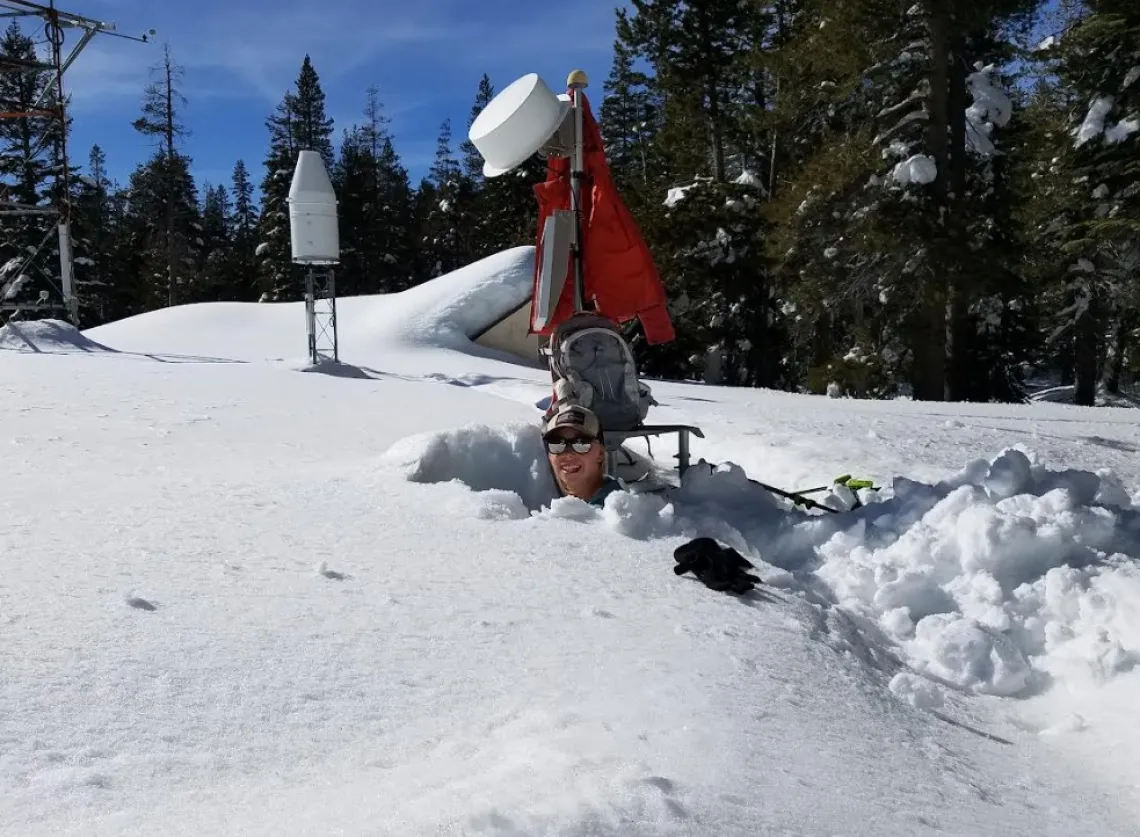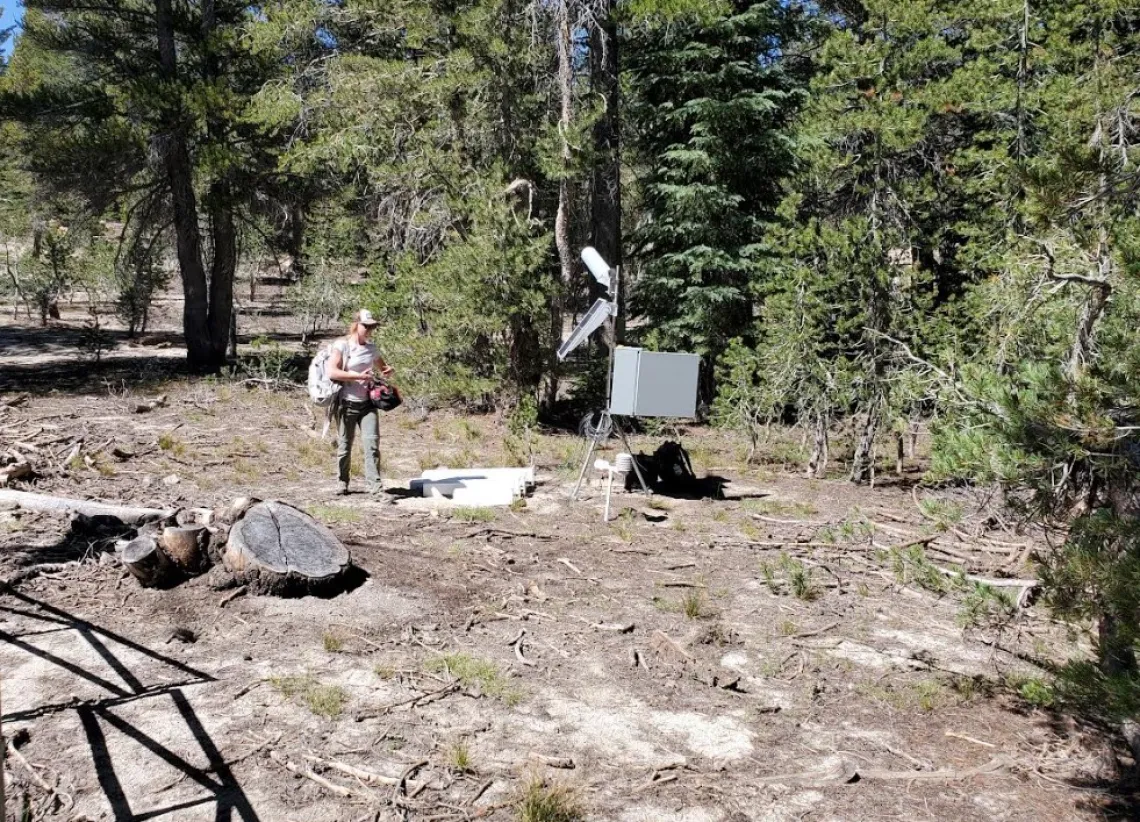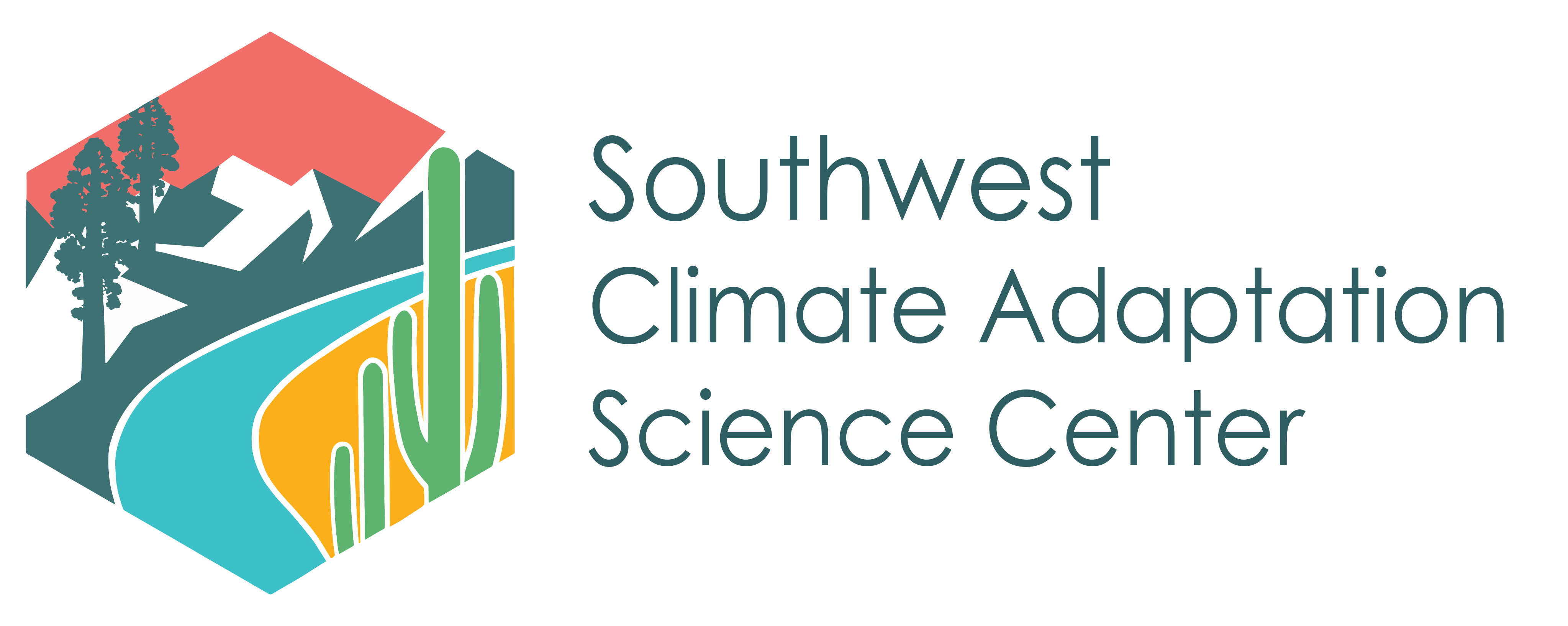Pursuit of Decision Support Services in Mountain Systems

Anne Heggli is part of the 2021-22 Natural Resource Workforce Development Fellowship program at the SW CASC. Heggli is attending the Desert Research Insititute (DRI) and has a Ph.D. in atmospheric sciences. Below are her reflections.
Just over a year into my Ph.D. I learned about the Southwest Climate Adaptation Science Center Natural Resources Workforce Development (NRWD) Fellowship, and I was encouraged to apply. When I read about the NRWD Fellowship mission, I felt like I had found a place in academic research where I fit in. A space that focuses on the decision makers—the ones managing our water and ecosystems—and working with policy makers through actionable science. Somewhere I could work with others to put decision makers in the forefront of research.
I grew up in the foothills of the Sierra Nevada in California, in a region that was divided by the north fork and south fork of the American River to the north and south, Lake Tahoe to the east and Folsom Lake to the west; there was no travel without crossing a river. I remember for many years not being able to get into town because the road was flooded, and then having to limit our water use in the summer months because we were experiencing drought. Like many parts of the western US, the American River is a valuable resource that refills reservoirs for domestic water supply, hydropower generation, irrigation, groundwater recharge, and recreation. However, the river also presents flooding hazards, the most catastrophic being when warm, landfalling atmospheric rivers rain on the snowpack and produce more runoff than if rain were to fall alone. Balancing rain-on-snow events that refill drought-stricken reservoirs while mitigating flood hazards is where decisions are made. Currently, there is no framework for midwinter snowpack runoff decision support to help decision makers understand how the snowpack might respond to rainfall. Thus, I decided to pursue my Ph.D. and came to work at the Desert Research Institute. I wanted to see if there was a way to leverage existing monitoring networks to provide dual-use data for (1) real-time situational awareness of rapid changing snowpack conditions that overcome the capabilities of models and (2) retrospective integration of high-quality observational data for model validation and improve pattern recognition.
This Fellowship has taught me valuable skills on how to participate in interdisciplinary teams, which is necessary for building decision support tools. During our first week of the Fellowship, we received training to effectively work as a part of an interdisciplinary team as a means to produce actionable science, since the science is most valuable if it has the ability to influence decisions. This dovetails with the importance of interdisciplinary teams and learning to work with people from other disciplines, landowners, local government, Native Tribes, and environmental groups to build use-inspired research questions. Since our first meeting we have been able to practice team-building skills as a cohort and to develop a research objective that addresses the needs of stakeholders through a review of the intersection of process-based restoration and water policy to improve the viability of waterways amidst climate change. Learning team-building skills with seven other graduate students has been an opportunity for growth that is not typically provided to graduate students, especially in the classroom. This experience has pushed me outside of my comfort zone and has expanded my scientific knowledge and helped me to think more broadly about solutions to problems by inviting others into the conversation.


